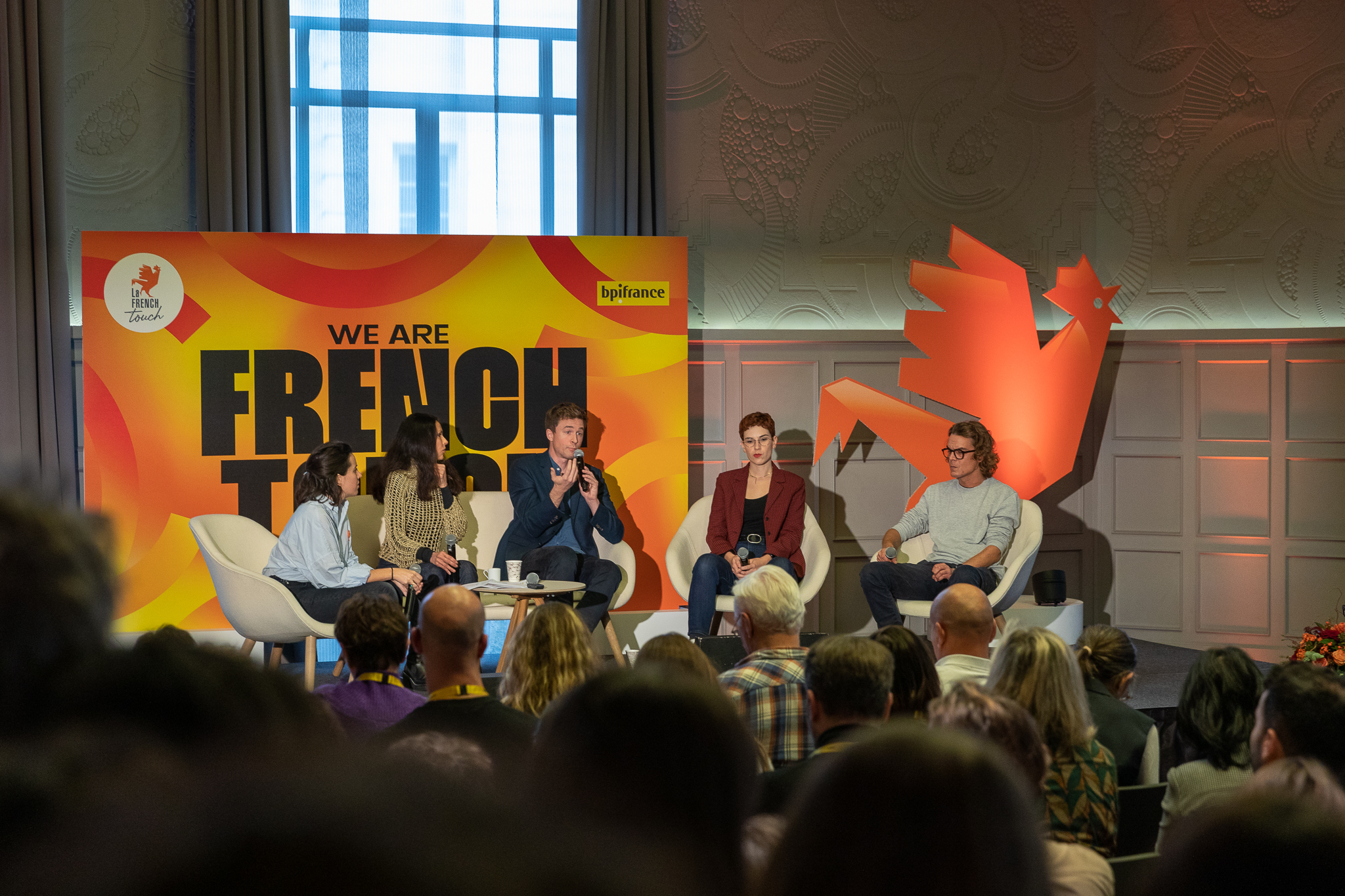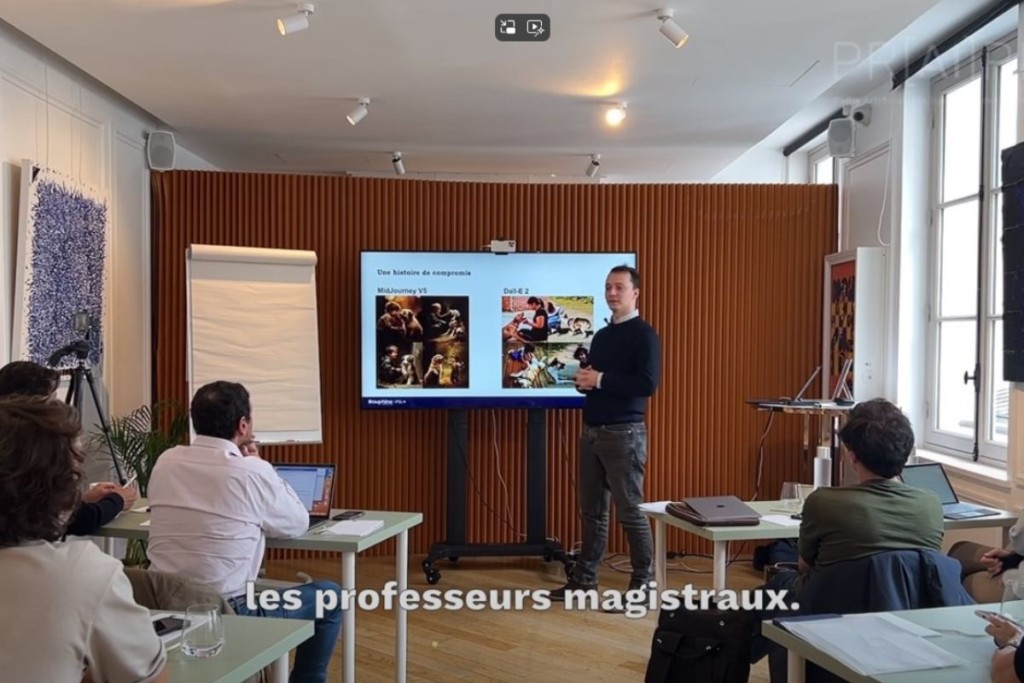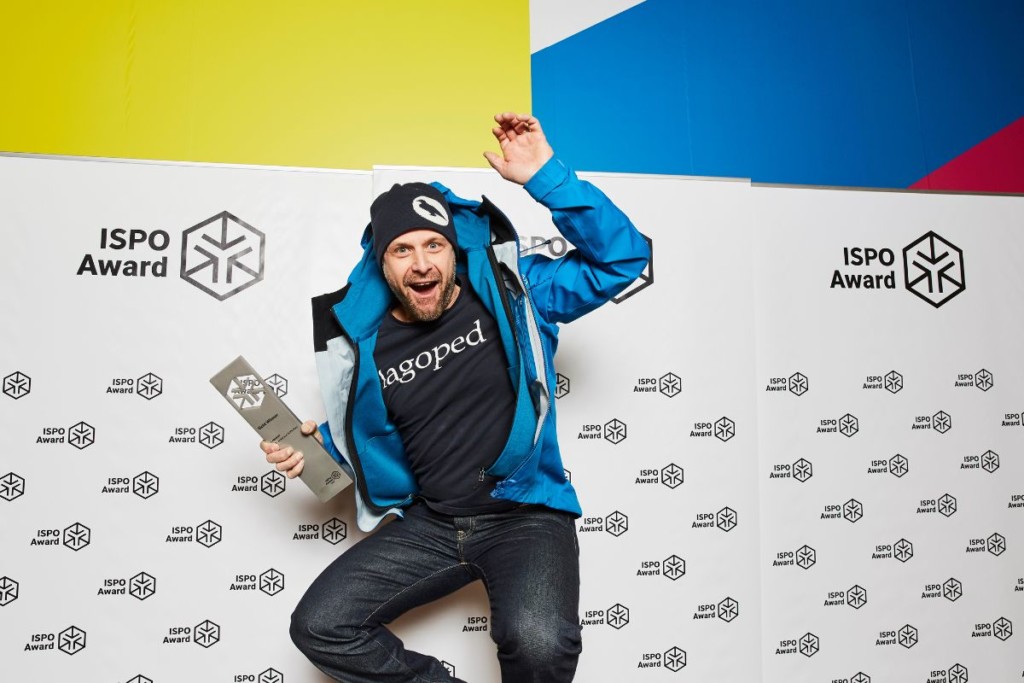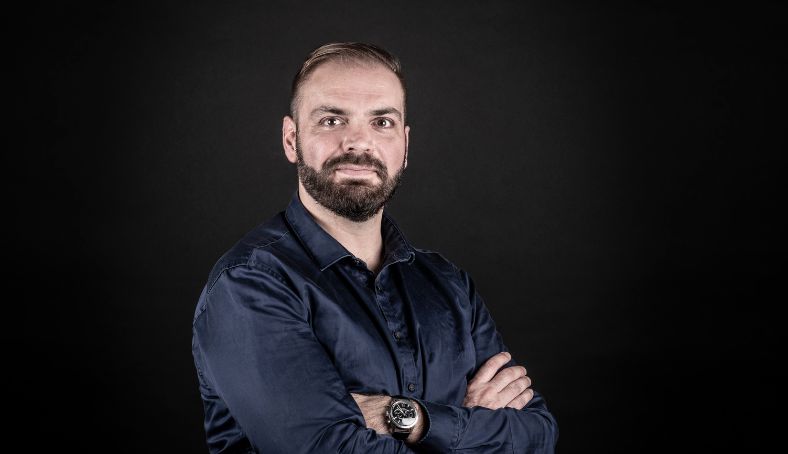
Round table devoted to the use of generative AI at We Are French Touch organized by Bpifrance at the Maison de la Mutualité.
Speakers:
Hélène Nguyen-Ban, CEO of Docent
Mélanie Lopez-Mallet, data scientist at Ubisoft
Adrien Basdevant, associate lawyer at Entropy, data, AI and intellectual property specialist, and member of the National Digital Council
Michael Turbot, Head of Strategy and Technology Promotion, Sony Computer Sciences Laboratories
Like every year, the We Are French Touch event organized by Bpifrance is an opportunity to bring together the best experts in the cultural and creative industries to question the issues of the time during well-attended round tables. Technologies are no exception to the rule: one year after the launch of ChatGPT, many questions have emerged about the advent of generative AI. We took stock.
The explosion of generative AI with the advent of ChatGPT makes ICCs and the entire French Touch ecosystem question the challenges of deploying AI. Creative process, access to data, standardization, intellectual property, and of course representation of companies and presence of French talents on platforms and algorithms. Many questions and issues were addressed during this round table on “the use of generative AI, opportunities and threats for content creation” moderated by Johanna Tircazes, ICC support manager at Bpifrance.
Generative artificial intelligence is booming. How to explain it?
Mélanie Lopez-Mallet (MLM): You have to imagine a black box, the algorithm. This black box stores a sum of more or less complex information through which we will teach it to perform a task. If you enter, for example, a photo of your pet, this more or less complex algorithm will translate this data into information, such as recognizing whether your animal is a cat or a dog. Its boom is mainly linked to the launch of ChatGPT and its conversational dimension which gives the impression of being able to speak and interact with the machine. It is this anthropomorphization which is the basis of a new revolution in our computer uses.
How can we use AI to push the boundaries of creativity without crystallizing possible threats?
Michael Turbot (MT): In the music industry, our philosophy is to see how this interaction with this “black box” is most relevant. It allows for very technical expertise in the production of new sounds that we will be able to make more fun and productive. This word productive explains well the idea of going faster (…) By working with artists we realized that their creative processes had changed: they spend a lot more time on the creative part thanks to this new ability to create new sounds.
MLM: When a machine creates, that does not mean that it replaces the creative. The process at work is not the same, there is no creative approach or intention, since the intention comes from the human who will use this machine. So it is not the democratization of generative AI that can kill creativity. For example, photography: it is not because in one click we can capture a moment that we are a photographer, and it is not because we all have a camera on our phones that we do all art. It's much more complex. Does the machine degrade creation? Or is it up to artists to ennoble the machines by doing something interesting with them?
What will tomorrow’s content look like?
Adrien Basdevant (AB): We are undoubtedly moving towards a world where more and more so-called “synthetic data” will be generated. These data will themselves become a new basis for feeding back into the model. In a world of hybrid experiences, the question is, how good will the content feed the algorithms? Generative AI has existed for more than 75 years and what we are currently experiencing with ChatGPT is a democratization of this technology. Should we then talk about homogenization of results? If today we cannot yet detect which generative AI tool was used to generate an image, will this still be the case tomorrow? Also, to what extent should the source of information be displayed? We can clearly see that these questions are no longer just technical, they are a social subject. For example, in your company will you have the right to use this type of tool? Without telling your superiors? This is the question of “shadow IT”. Instead of holding divisive or asymmetrically caricatured positions by responding in a dichotomous manner, let us be careful not to prejudge these tools. Let's keep an open mind, let's participate in this co-construction.
How can we avoid this trap of homogenization of content, for the benefit of diversity?
MLM: The key is to include creatives. And the first step is to confront their questions, their doubts and their legitimate fears. Having a perspective on this technology, through their points of view, is healthy. To gradually arrive at a knowledge that allows us to move from fear to understanding. Some creatives will make the “enlightened” choice not to use generative AI, others will say “that interests me, that gives me an idea”. The best moment is when the artist expresses his interest himself. Because from that moment, we can build a project, a way of using these technologies. This is how we achieve quality content.
AB: If certain content publishers decide to no longer be listed on ChatGPT, they can choose to deactivate the indexing of their content. What we call “opt-out”, which was done recently by the “New York Times” and by various publishers, groups, European media, notably French. What must be understood is that today in the pre-training of these algorithms, French-speaking content, for example, is already under-represented. If everyone deactivates this indexing you can be sure that in terms of results generated there will really be very little content that will have been trained on French content. Which raises a very broad question of content, linguistic, cultural diversity…
Hélène Nguyen-Ban (HNB): At Docent we have chosen not to use, as certain cultural platforms or social networks do, “collaborative featuring” algorithms, but on the contrary to restart the research from the very beginning with the help of historians of the art, in order to build algorithms capable of reconstituting clusters of works that are visually similar, but also algorithms capable of “ screeners » millions of texts and identify the words that describe an artist's practice, to then make deep connections between artists and their practices. The objective is to recommend personalized content which does not depend on “like so and so you liked Picasso so we will recommend so and so to you” but to go well beyond this “ echochamber » which, when recommendation algorithms work this way, end up creating a form of cultural isolation. Finally, to encourage discovery, and not just a standardized discovery, we formed a partnership with Goldsmiths, a school of art historians and contemporary art curators in London. They create online content for us on which we can communicate in English for artists from regions of the world that do not have English-speaking content, in order to recommend them face to face or with Western artists.
How to reconcile access to data and intellectual property?
AB: For the user there is first a very operational response: make a “ benchmarking » of the available tools in order to choose the one that corresponds to your use case and then to read the general conditions of use. It may be trivial, but there are platforms and tools that allow you to own the generated result, and others not... Some give you ownership of the generated result, others give you a license to use, and in both cases over fixed or undetermined periods of time. Then a more theoretical question arises: is content generated by generative AI protected by copyright? From Hollywood to Paris the debate arises in different ways. In France, for example, an illustrator who was to publish a comic strip created with the help of “MidJourney” had to cancel its publication because the publishing house feared repercussions on his image. So we can clearly see that the debate is not only legal. It’s a lively debate. And this is why, before getting started, you need to understand the value chains.
When an artist picks up a tool, there is generally a back and forth between the tool and his own creative process. In the end who is the creator? What value do we attribute to the data used to train the model?
TM: Making music with AI is as complicated as making music with a computer. Is the computer just for putting the tracks together? We must remain vigilant on this issue of intellectual property. Because there is a big difference between an AI which is used to generate a piece in the style of so-and-so – and in this case it is counterfeiting – and using the AI as a “ sample ».
AB: On the sharing of value, the answer is not only legal. It is multidisciplinary because there is an economic aspect and a governance aspect. From the user's point of view we can already learn how to configure the tool: it is possible, in the settings, to accept or not that your interactions with a conversational agent, prompts or results generated by your interaction, are or not reused for a next phase of retraining. In the creative process, it's different: there will certainly be less homogenization if the prompts are more sophisticated. From a macro point of view, I think we need to facilitate discussion spaces to find new modalities, and ensure that tool developers do not need to go see each content publisher, and Conversely. Otherwise only the most organized will be able to be represented. These modalities are not specific to ICC: in health when the AP-HP produces health data used by Siemens, for example, to create a digital twin of the heart, the question is again to know who owns the data , the transformed algorithms. Succeeding in questioning yourself in a dispassionate manner and avoiding getting bogged down would allow you to benefit from a promising innovation.
Recently a bill was tabled to integrate AI into intellectual property. Should we regulate or let the actors do their thing as in the Metaverse?
AB: Often, as soon as there is a new innovation, we think it's the Wild West. However, a robust arsenal already exists. Which does not mean that it should not evolve, but we must already succeed in applying what already exists and on things where there is a real renovation to be made. In the United States for example with the “ fair use ". Should we create the “ Fair learning » ? And think about the border between the temporary monopoly of exploitation and the dissemination of knowledge. I encourage those who are more involved in politics and law to be creative and to understand “tech” and its uses. Don't just ban...
Relive the We Are French Touch 2023 edition event
Similar items
- All
- Visual arts & Art de vivre
- Film & Audiovisual
- Edition
- Video games
- Fashion & Design
- Music & Performing Arts



